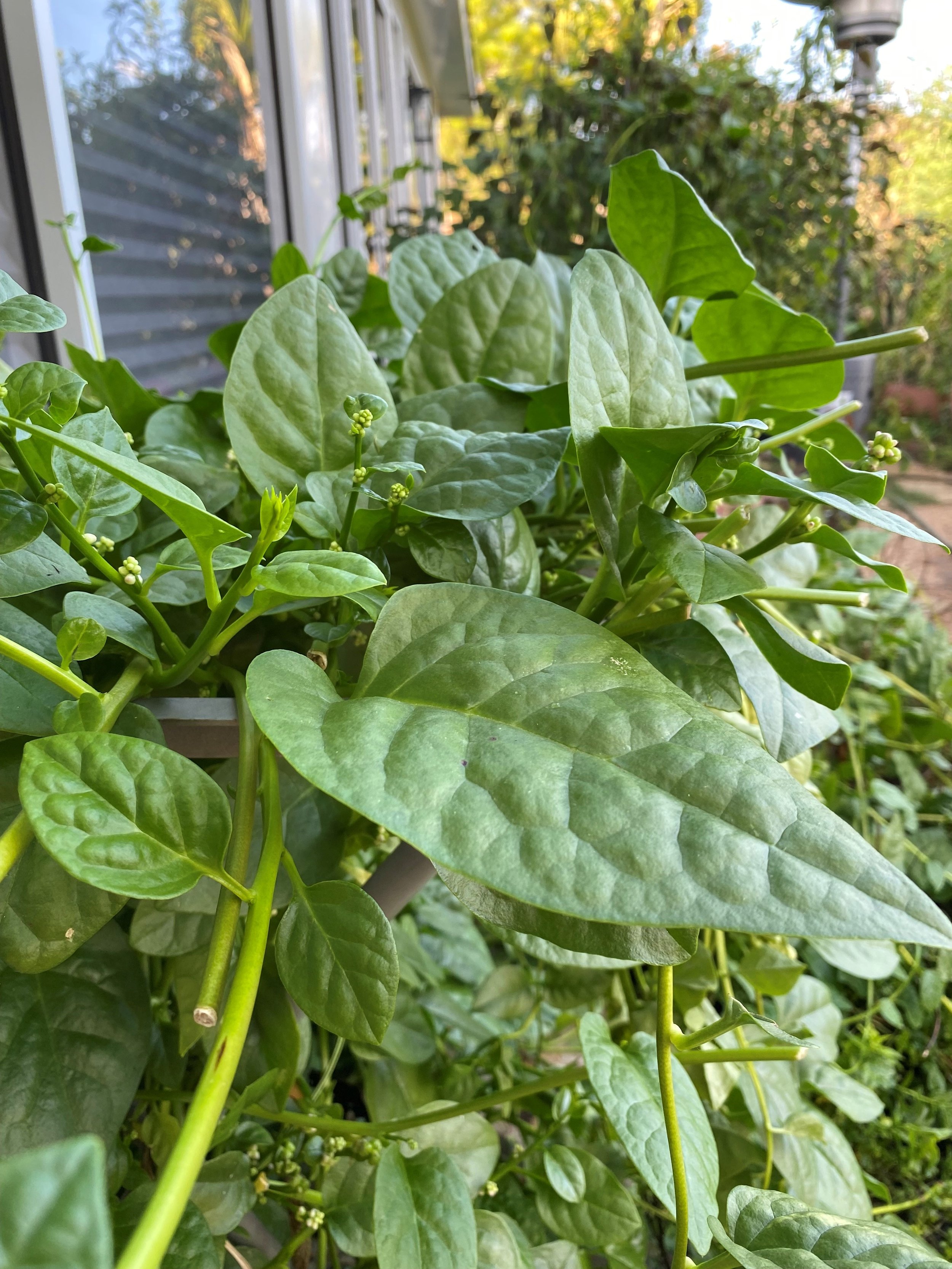Malabar Spinach: Growing, Cooking, and Savoring this Leafy Delight
Malabar Spinach: A Verdant Tapestry of Health and Gastronomy
In the vast realm of culinary treasures and herbal wonders, Malabar Spinach, known for its botanical name Basella alba and Basella rubra, emerges as a lush and versatile vine celebrated for its diverse types. These intriguing varieties not only offer an exquisite spectrum of flavors but also harbor potential health benefits. As we embark on a journey to discover the multifaceted world of Malabar Spinach, we'll unveil its rich diversity, explore the wellness potential it holds, delve into its culinary and medicinal applications across the globe, and learn how to cultivate and nurture this exceptional vine in your garden.
Varieties of Malabar Spinach: Malabar Spinach unfolds its botanical diversity through a range of types, each with its unique characteristics:
Green Malabar Spinach (Basella alba): This variety showcases vibrant green leaves and stems, exuding a mild and slightly tangy flavor. It is the most common type found in various cuisines.
Red Malabar Spinach (Basella rubra): Recognized by its deep red stems and leaves, this type not only adds visual appeal to dishes but also offers a subtle earthy flavor.
Health Benefits of Malabar Spinach Varieties: Malabar Spinach, in its various forms, offers a medley of potential health benefits:
Green Malabar Spinach (Basella alba): Rich in vitamins and minerals, this variety may support overall health, including immune system function, skin vitality, and bone health.
Red Malabar Spinach (Basella rubra): The red variety is equally nutritious and may provide essential nutrients, including antioxidants that support well-being.
Culinary and Medicinal Applications: Malabar Spinach boasts a rich history of culinary and medicinal uses worldwide:
Culinary Masterpiece: Malabar Spinach leaves are prized for their role in various dishes. They are often featured in soups, stir-fries, curries, and salads, adding a delightful tanginess and a splash of color.
Herbal Wisdom: In traditional medicine, Malabar Spinach is believed to have cooling and diuretic properties. It's often used in herbal remedies to alleviate minor ailments and promote well-being.
Global Appeal: Malabar Spinach has a global presence in culinary traditions. In India, it's a key ingredient in "thoran," a popular side dish. In the Philippines, it's used in "sinigang," a traditional soup known for its tartness.
Incorporating Malabar Spinach into a Healthy Diet: To embrace the health and flavor of Malabar Spinach in your daily meals, consider these approaches:
Culinary Exploration: Experiment with Malabar Spinach leaves in various dishes, especially in salads, stir-fries, and soups. Their tangy taste adds a unique dimension to your culinary creations.
Herbal Elixirs: Explore the world of herbal infusions by brewing Malabar Spinach leaves into teas. These infusions may offer potential health benefits and provide a refreshing herbal beverage.
Planting and Caring for Malabar Spinach: Cultivating Malabar Spinach is a rewarding endeavor, but it requires attention to its specific needs. Here's how to get started:
Select the Right Location: Malabar Spinach thrives in full sun to partial shade, with well-draining soil rich in organic matter. It appreciates warm, tropical conditions.
Planting Method: Malabar Spinach can be grown from seeds or cuttings. When starting from seeds, soak them for a few hours before planting to improve germination.
Spacing: Space Malabar Spinach plants about 6-12 inches apart to allow for healthy growth and air circulation.
Watering: Keep the soil consistently moist but not waterlogged. Regular watering is crucial, especially during dry periods.
Pruning: Regularly pinch back the vines to encourage bushier growth. Pruning helps maintain the shape of the plant.
Pest Control: Malabar Spinach is generally pest-resistant. However, keep an eye out for common garden pests and address them as needed.
USDA Hardiness Zones and Indoor/Greenhouse Cultivation: Malabar Spinach thrives in warm, tropical climates and is best suited for USDA hardiness zones 10-11. In regions with colder winters, consider growing Malabar Spinach in containers and bringing them indoors during the winter months to provide warmth and protection. Alternatively, it can flourish in a greenhouse with controlled conditions, ensuring it thrives throughout the year.
In conclusion, Malabar Spinach, with its diverse types and potential health benefits, adds a refreshing twist to the world of culinary delights and wellness. Whether you're savoring its tangy flavor in culinary creations, exploring herbal remedies, or nurturing it in your garden, this exceptional vine encapsulates both versatility and vitality. Embrace the verdant allure of Malabar Spinach and let it elevate your culinary experiences and contribute to your overall well-being.

